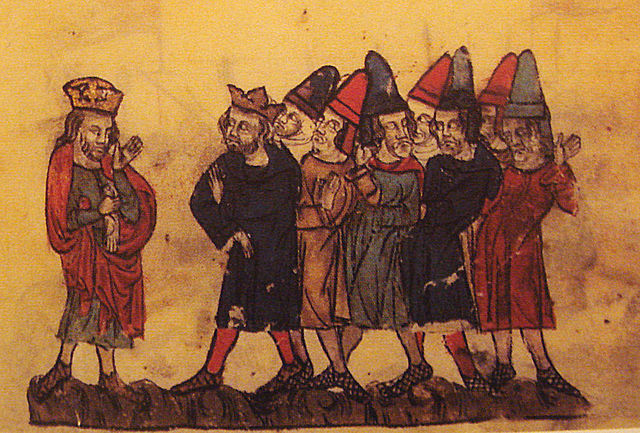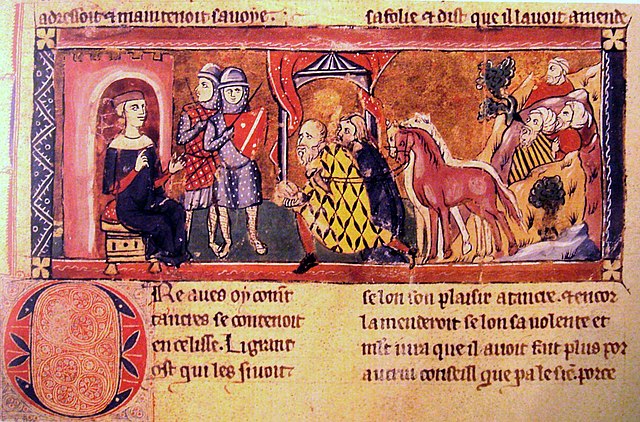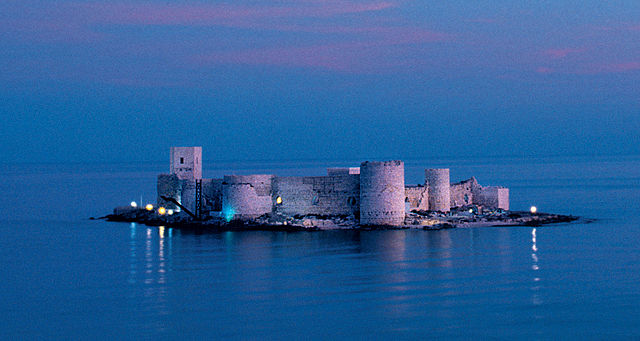Hethum II, also known by several other romanizations, was king of the Armenian Kingdom of Cilicia, ruling from 1289 to 1293, 1295 to 1296 and 1299 to 1303, while Armenia was a subject state of the Mongol Empire. He abdicated twice in order to take vows in the Franciscan order, while still remaining the power behind the throne as "Grand Baron of Armenia" and later as Regent for his nephew. He was the son of Leo II of Armenia and Kyranna de Lampron, and was part of the Hethumid dynasty, being the grandson of Hethum I, who had originally submitted Cilicia to the Mongols in 1247. He was assassinated with his nephew and successor Leo III by the Mongol general Bilarghu, who himself was later executed for this by the Mongol Ilkhan ruler Öljaitü.
King Hethum II, in Franciscan gown
King Hethum II in prayer from a decorative plate
The Armenians fought with the Mongols (left) and vanquished the Mamluks (right) at the 1299 Battle of Homs. (History of the Tatars)
Hethum II (left) parting from Ghazan and his Mongols in 1303 (History of the Tatars)
Armenian Kingdom of Cilicia
The Armenian Kingdom of Cilicia, also known as Cilician Armenia, Lesser Armenia, Little Armenia or New Armenia, and formerly known as the Armenian Principality of Cilicia, was an Armenian state formed during the High Middle Ages by Armenian refugees fleeing the Seljuk invasion of Armenia. Located outside the Armenian Highlands and distinct from the Kingdom of Armenia of antiquity, it was centered in the Cilicia region northwest of the Gulf of Alexandretta.
Baldwin of Boulogne receiving the homage of the Armenians in Edessa.
Fortress of Korikos in Cilician Armenia built c. the thirteenth century.
A young Cilician Armenian knight.
Ghazan ordering King Hetum II to accompany Kutlushah on the 1303 attack on Damascus.








